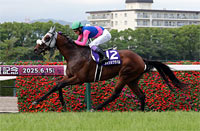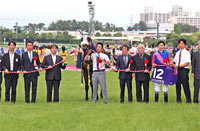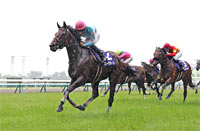Takarazuka Kinen (G1) - Data Analysis
Race that determines the middle-distance champion of the summer
Many of the runners in the Takarazuka Kinen are selected by votes from racing fans. As a result, this legendary contest brings together a diverse group of runners that varies each year, including not only older runners that have enjoyed success in middle to long distance races, but also runners that have fared well in mile-long races, and even some 3-year-olds. Let’s now look for some trends in this race based on results for the last 10 years, thereby bringing our G1 race predictions for the spring season to a satisfying close.
Contest between 4 to 5-year-olds
The last 10 winners of the Takarazuka Kinen were all either 4 to 5-year-olds. Especially the 5-year-olds delivered excellent performance, dominating the Top 2 in 2015, 2019, and 2021. There were few strong showings among runners aged 6 and above, which consistently finished outside the Top 2. It would therefore seem prudent to focus on 4 to 5-year-olds. [Table 1]
[Table 1] Performance by age (last 10 years)
| Age |
Performance
[1st-2nd-3rd-4th or lower] |
Win ratio |
Top 2 ratio |
Top 3 ratio |
| 3 |
0-0-0-1 |
0% |
0% |
0% |
| 4 |
3-1-6-29 |
7.7% |
10.3% |
25.6% |
| 5 |
7-5-4-36 |
13.5% |
23.1% |
30.8% |
| 6 |
0-3-0-24 |
0% |
11.1% |
11.1% |
| 7 or above |
0-1-0-22 |
0% |
4.3% |
4.3% |
Noteworthy performances by fillies and mares
Looking at performances by runners over the last 10 years in terms of gender, we find that fillies and mares achieved a Top 3 ratio of 41.7%, sharply above the percentage for colts and geldings. This trend was especially pronounced in recent years, when fillies and mares secured three consecutive victories (Lys Gracieux in 2019 and Chrono Genesis in 2020 and 2021). Over the last 10 years, fillies and mares only finished outside the Top 3 twice, in 2012 and 2018. If any fillies and mares enter the race this year, we should watch them closely. [Table 2]
[Table 2] Performance by gender (last 10 years)
| Gender |
Performance
[1st-2nd-3rd-4th or lower] |
Win ratio |
Top 2 ratio |
Top 3 ratio |
| Colts and geldings |
6-9-5-98 |
5.1% |
12.7% |
16.9% |
| Fillies and mares |
4-1-5-14 |
16.7% |
20.8% |
41.7% |
Strong performance by runners that have finished 2nd in their previous race
Runners that have been defeated to 2nd in their previous race often fare well in the Takarazuka Kinen. This trend not only applies to runners that have previously contested a G1 race backed by high favoritism and finished as runner-up, but also to those that have finished 2nd in a non-G1 race last time out. Examples of runners in the latter group were Marialite, who won the 2016 race backed as 8th favorite after finishing 2nd in the Meguro Kinen (G2) in her previous outing, and Noble Mars, who finished 3rd in the 2018 race backed as 12th favorite after similarly coming in 2nd in the Meguro Kinen in his previous race. We should keep this in mind when making our predictions. [Table 3]
[Table 3] Performance by finish in the previous race (last 10 years)
| Finish in previous race |
Performance
[1st-2nd-3rd-4th or lower] |
Win ratio |
Top 2 ratio |
Top 3 ratio |
| 1st |
1-2-3-22 |
3.6% |
10.7% |
21.4% |
| 2nd |
3-2-3-10 |
16.7% |
27.8% |
44.4% |
| 3rd-5th |
3-2-1-33 |
7.7% |
12.8% |
15.4% |
| 6th-9th |
2-3-3-32 |
5.0% |
12.5% |
20.0% |
| 10th or lower |
1-1-0-15 |
5.9% |
11.8% |
11.8% |
Watch runners that have finished 4th or lower in the Tenno Sho (Spring)
Looking at performances by runners over the last 10 years in terms of their previous race, we find that runners coming from the Tenno Sho (Spring) produced the highest number of winners. However, runners that had finished in the Top 3 of that race struggled with performance of [0-0-1-14], so we should look for rebound performances by runners that had been beaten to 4th or lower in the Tenno Sho (Spring). Conversely, for runners coming from the Osaka Hai after its upgrade to G1 status, those that had finished in the Top 2 of that race delivered excellent performance of [1-1-1-3]. In addition, among runners that had contested an overseas G1 race last time out, those coming from the Dubai Sheema Classic and from the Queen Elizabeth II Cup (Hong Kong) delivered strong performance of [1-1-2-6] and [1-1-0-4], respectively. [Table 4]
[Table 4] Performance by major previous race (last 10 years)
| Previous race |
Performance
[1st-2nd-3rd-4th or lower] |
Win ratio |
Top 2 ratio |
Top 3 ratio |
| Tenno Sho (Spring) |
4-3-2-30 |
10.3% |
17.9% |
23.1% |
| Osaka Hai |
2-1-1-10 |
14.3% |
21.4% |
28.6% |
| Naruo Kinen |
1-3-1-15 |
5.0% |
20.0% |
25.0% |
| Meguro Kinen |
1-0-1-13 |
6.7% |
6.7% |
13.3% |
| Victoria Mile |
0-0-3-5 |
0% |
0% |
37.5% |
| Overseas race |
2-3-2-14 |
9.5% |
23.8% |
33.3% |
Note: Osaka Hai data only include races after the upgrade to G1 status.
Note: Only races that produced Top 3 finishers in the Takarazuka Kinen are shown.
Runners starting in Bracket 8 fare well
Runners starting in Bracket 8 in the Takarazuka Kinen have been exceptionally strong performers, securing seven victories over the last 10 years. However, there is a chance this may be a coincidence as there is no general pattern of success among runners starting in the outer brackets in the Hanshin 2,200 meters. That said, the strong results are hard to ignore, so we should pay attention to runners starting in Bracket 8. [Table 5]
[Table 5] Performance by bracket number (last 10 years)
| Bracket number |
Performance
[1st-2nd-3rd-4th or lower] |
Win ratio |
Top 2 ratio |
Top 3 ratio |
| 1 |
0-2-3-10 |
0% |
13.3% |
33.3% |
| 2 |
1-1-2-11 |
6.7% |
13.3% |
26.7% |
| 3 |
0-1-1-13 |
0% |
6.7% |
13.3% |
| 4 |
0-2-0-14 |
0% |
12.5% |
12.5% |
| 5 |
1-2-0-15 |
5.6% |
16.7% |
16.7% |
| 6 |
1-0-1-18 |
5.0% |
5.0% |
10.0% |
| 7 |
0-2-1-18 |
0% |
9.5% |
14.3% |
| 8 |
7-0-2-13 |
31.8% |
31.8% |
40.9% |
Seek out the winner!
Runners that have secured a victory in a 2,000-2,400m G1 race in the previous year have the edge
Eight of the 10 recent winners had won a 2,000-2,400m G1 race in the previous year. As illustrated in Table 1, the last 10 winners were all either 4-year-olds or 5-year-olds. In other words, it would seem a good idea to focus on 4-year-olds and 5-year-olds that have won a middle-distance G1 race in the previous year. [Table 6]
[Table 6] Winners’ experience of winning a 2,000-2,400m G1 race in the previous year (last 10 years)
| Year |
Winner |
Experience of winning a 2,000-2,400m G1 race in previous year |
| 2012 |
Orfevre |
Satsuki Sho (Japanese 2000 Guineas), Tokyo Yushun (Japanese Derby) |
| 2013 |
Gold Ship |
Satsuki Sho (Japanese 2000 Guineas) |
| 2014 |
Gold Ship |
Takarazuka Kinen |
| 2015 |
Lovely Day |
None |
| 2016 |
Marialite |
Queen Elizabeth II Cup |
| 2017 |
Satono Crown |
Hong Kong Vase |
| 2018 |
Mikki Rocket |
None |
| 2019 |
Lys Gracieux |
Queen Elizabeth II Cup |
| 2020 |
Chrono Genesis |
Shuka Sho |
| 2021 |
Chrono Genesis |
Takarazuka Kinen |
(Yodohito Himezono)
|



















